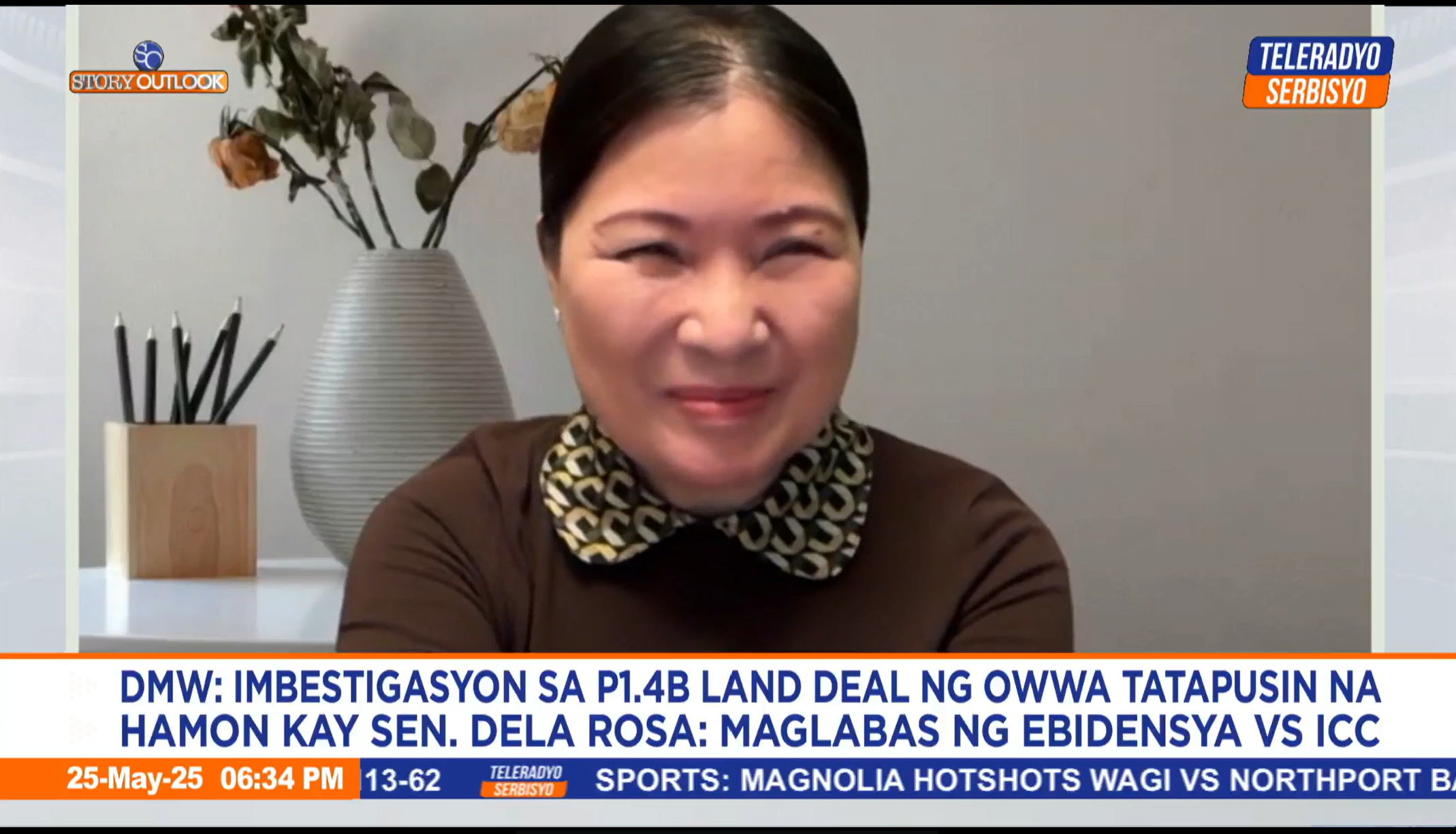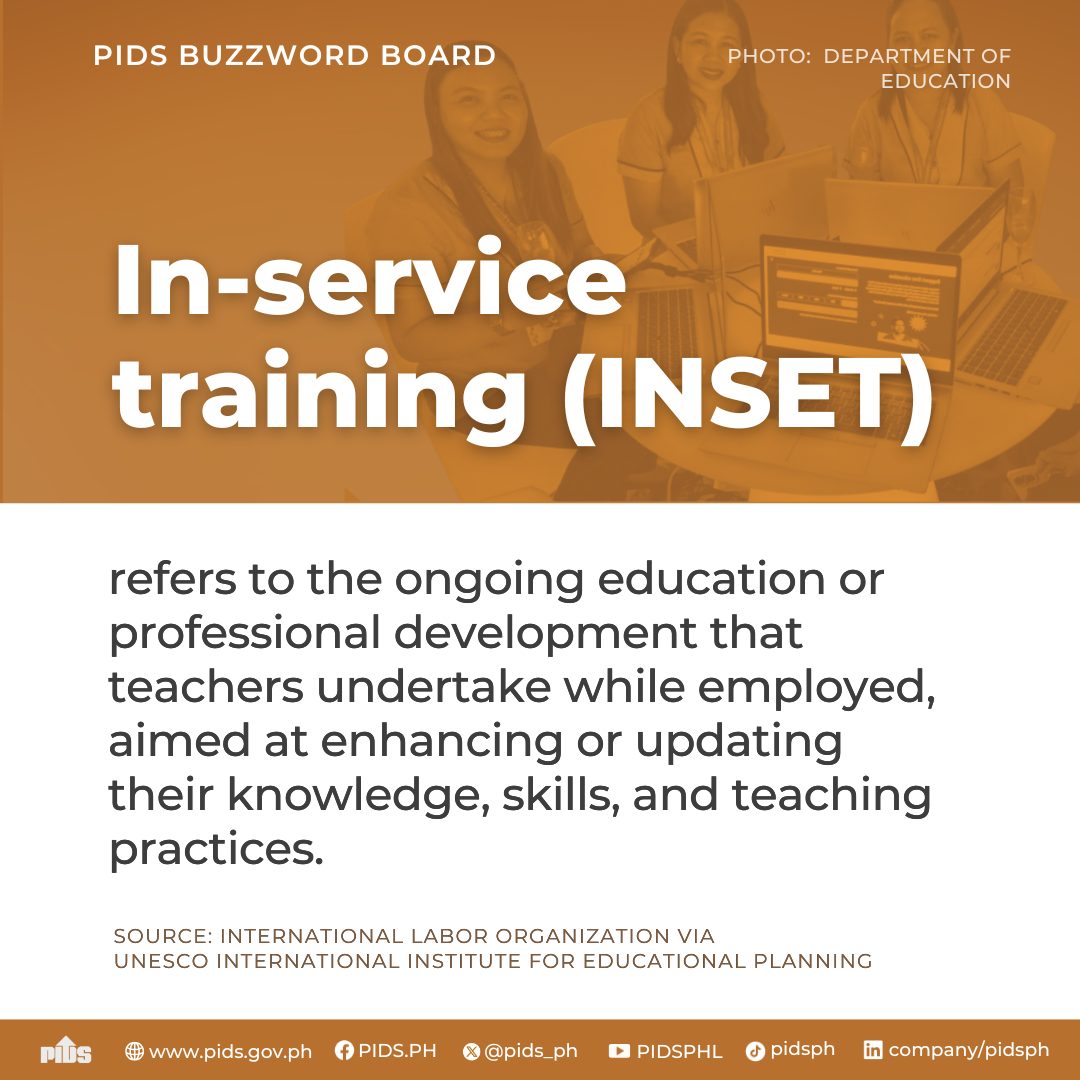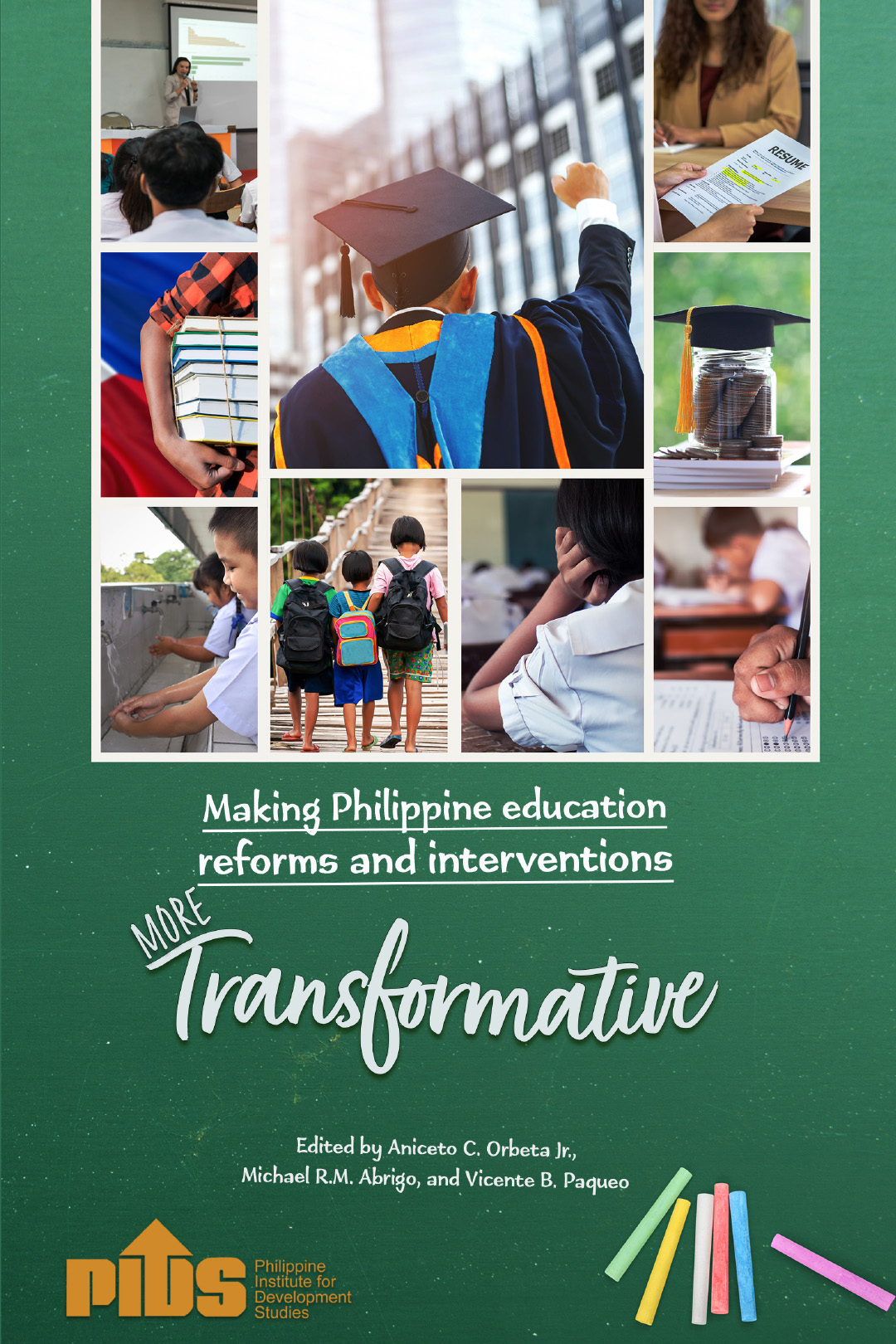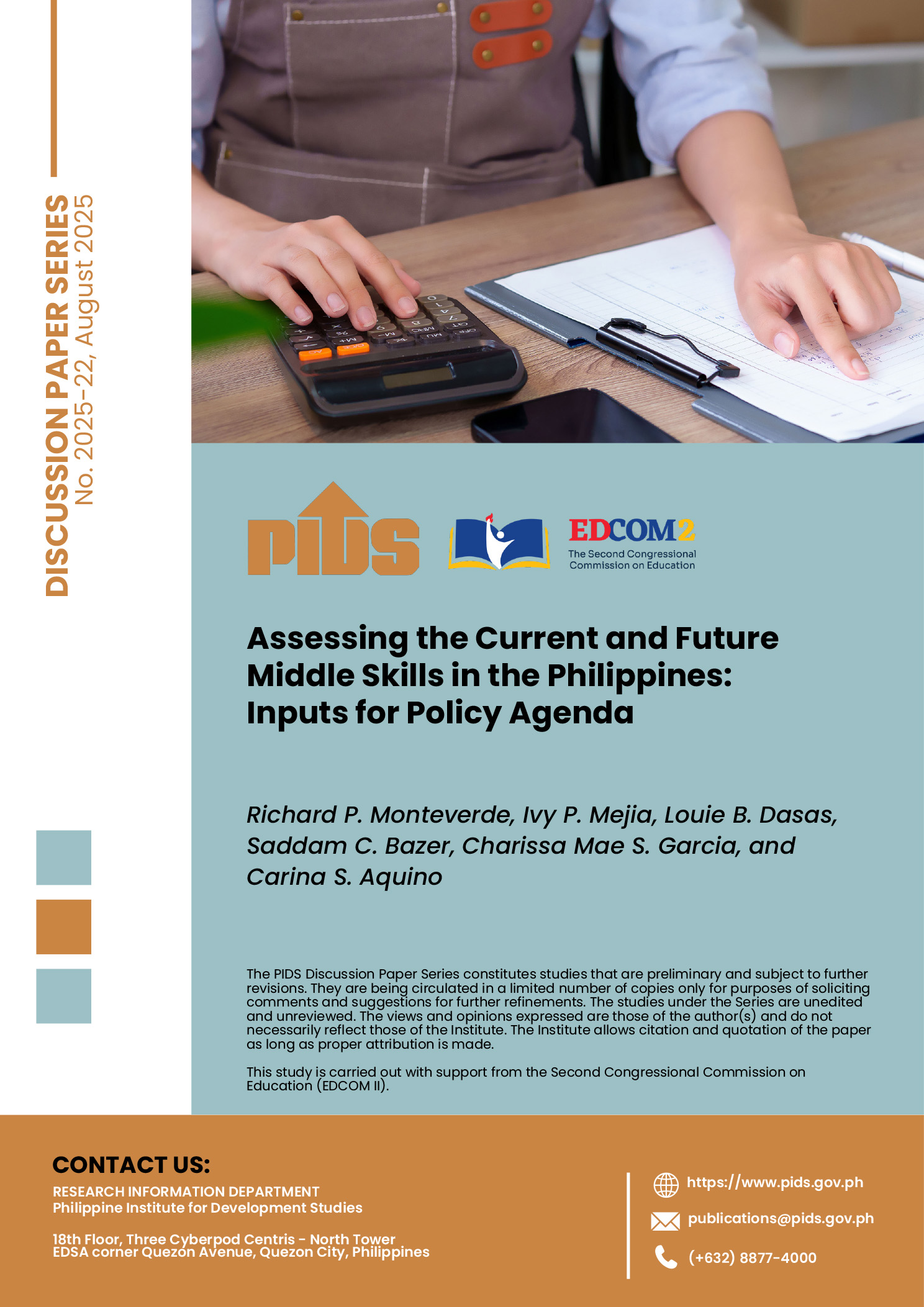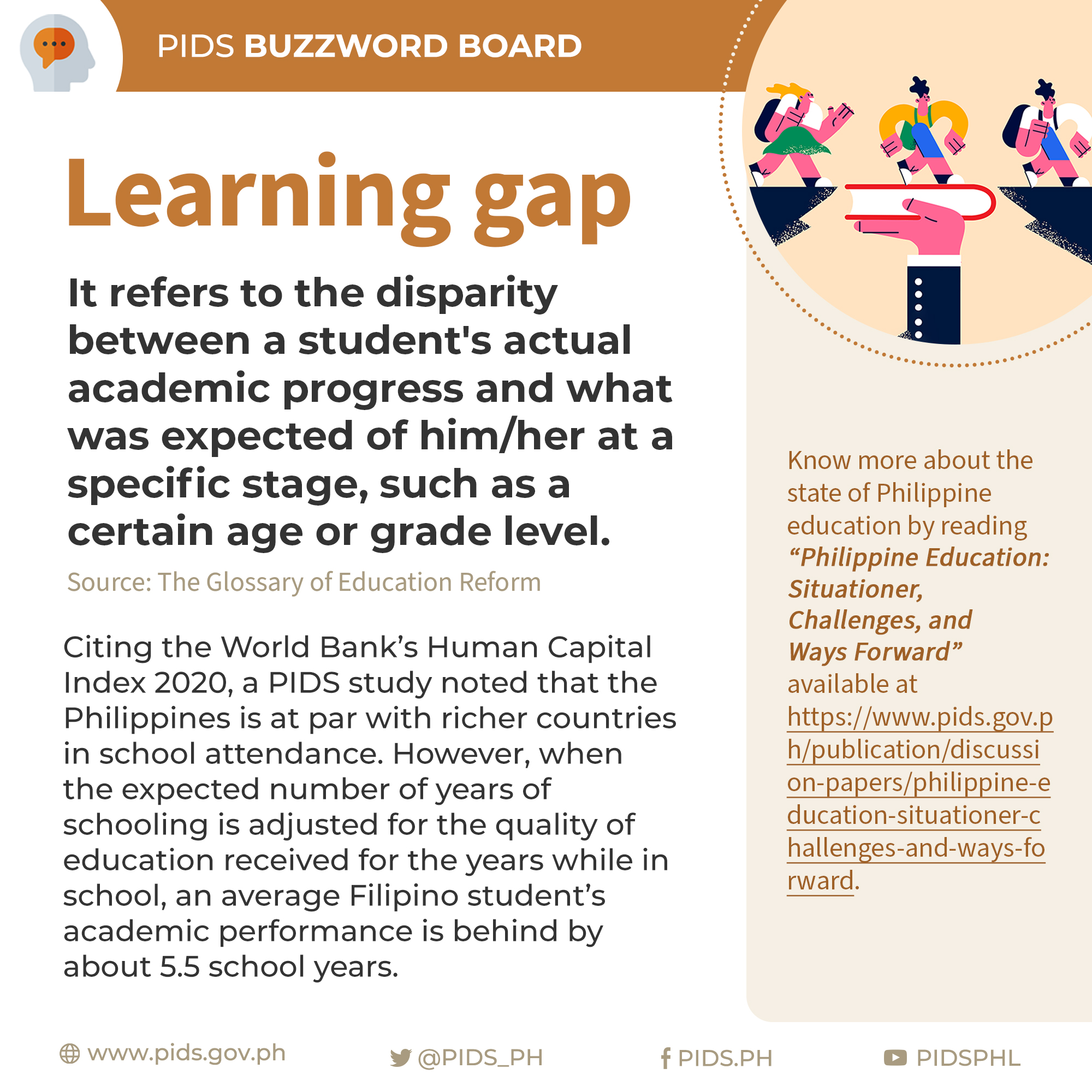
To familiarize everyone with key socioeconomic terms and concepts, we are launching this new social media series.
For this week, our buzzword is “learning gap”.
It refers to the disparity between a student's actual academic progress and what was expected of him/her at a specific stage, such as a certain age or grade level.
Source: The Glossary of Education Reform
Citing the World Bank’s Human Capital Index 2020, a PIDS study noted that the Philippines is at par with richer countries in school attendance. However, when the expected number of years of schooling is adjusted for the quality of education received for the years while in school, an average Filipino student’s academic performance is behind by about 5.5 school years.
Know more about the state of Philippine education by reading “Philippine Education: Situationer, Challenges, and Ways Forward” available at https://www.pids.gov.ph/publication/discussion-papers/philippine-education-situationer-challenges-and-ways-forward.


